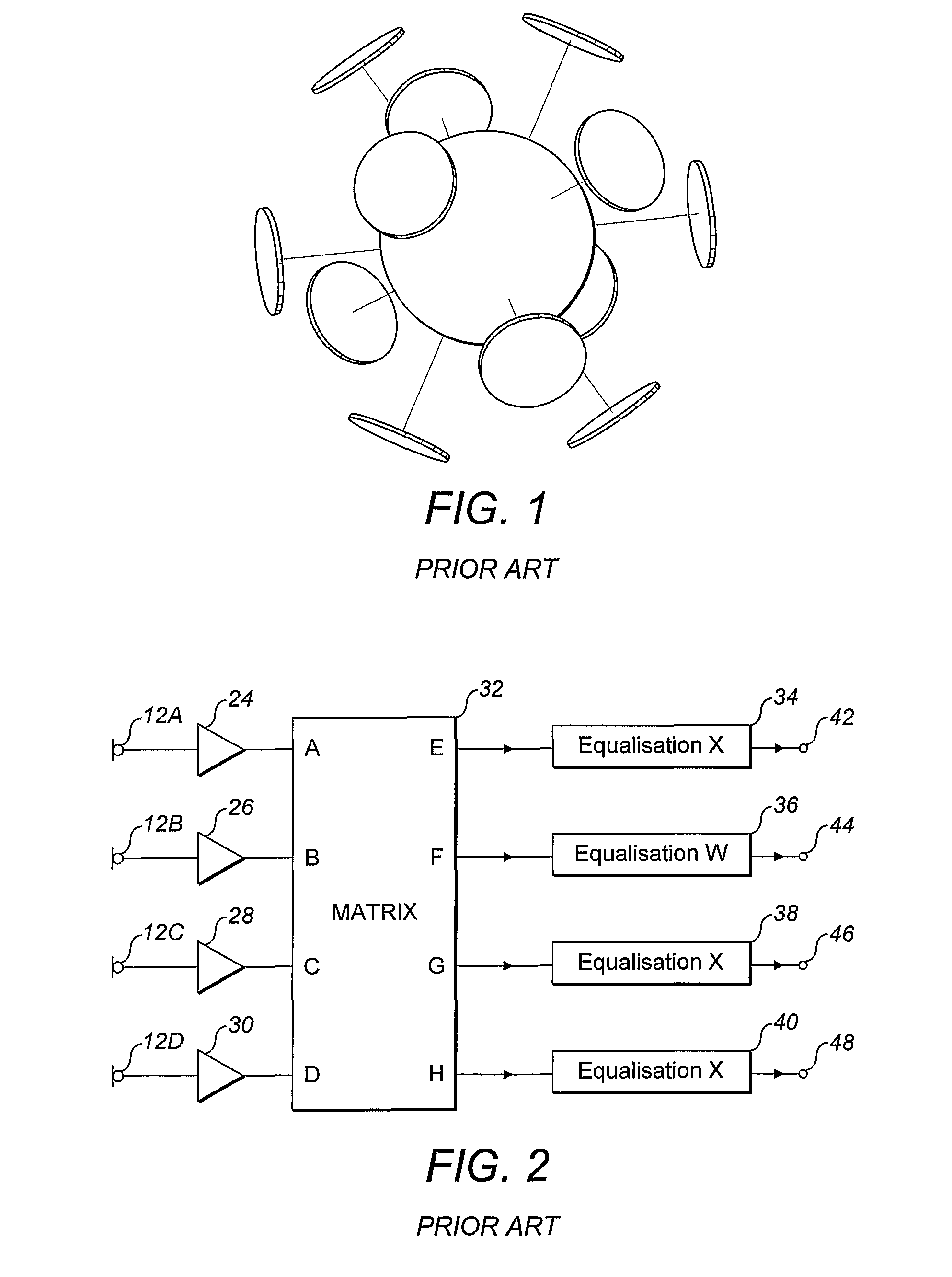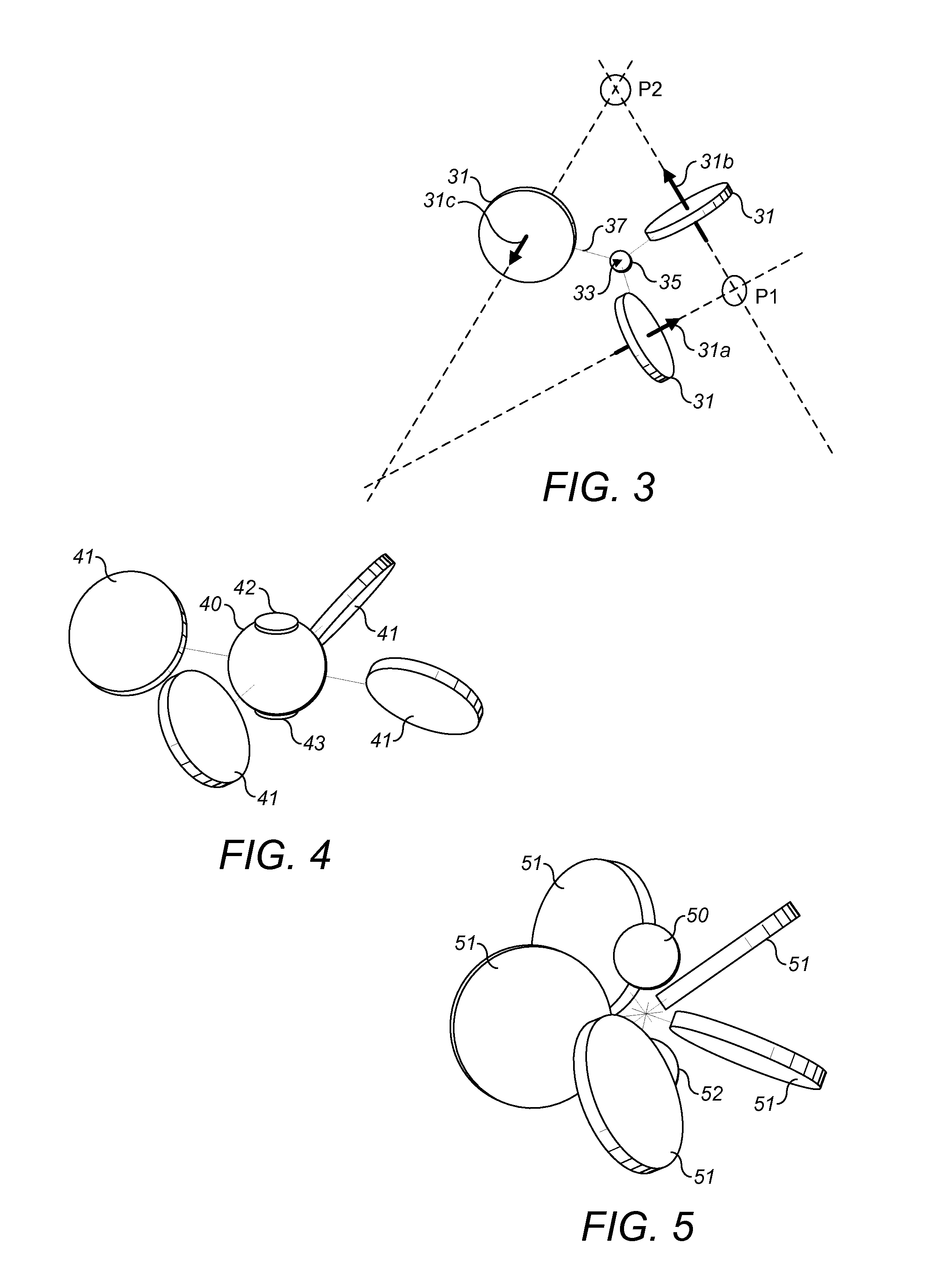Microphone array
a microphone array and array technology, applied in the field of microphone arrays, can solve the problems of generating acoustic cavities, affecting the sound quality of the microphone, so as to simplify the processing of audio signals, improve the response uniformity, and simplify the effect of processing the captured audio signals
- Summary
- Abstract
- Description
- Claims
- Application Information
AI Technical Summary
Benefits of technology
Problems solved by technology
Method used
Image
Examples
Embodiment Construction
[0064]The present invention addresses the problem of designing a microphone array that can extract directional information about the sound at a reference point in space, with directional characteristics that are maintained substantially constant over several octaves and with a good signal-to-noise ratio, as would be required for example for the studio or location recording of music.
[0065]The first systematic description of a method to do this is described by Craven, P. G. and Gerzon, M. A. in British patent GB1512514 (“Coincident microphone simulation covering three dimensional space and yielding various directional outputs” and by Gerzon, M. A. in “The Design of Precisely Coincident Microphone Arrays for Stereo and Surround Sound”, Preprint L-20, 50th convention of the Audio Engineering Society (February 1975). These documents disclose the possibility of a sphere densely covered with microphones, or covered with a small number of strategically-placed microphone sensors. A suitable ...
PUM
 Login to View More
Login to View More Abstract
Description
Claims
Application Information
 Login to View More
Login to View More - R&D
- Intellectual Property
- Life Sciences
- Materials
- Tech Scout
- Unparalleled Data Quality
- Higher Quality Content
- 60% Fewer Hallucinations
Browse by: Latest US Patents, China's latest patents, Technical Efficacy Thesaurus, Application Domain, Technology Topic, Popular Technical Reports.
© 2025 PatSnap. All rights reserved.Legal|Privacy policy|Modern Slavery Act Transparency Statement|Sitemap|About US| Contact US: help@patsnap.com



